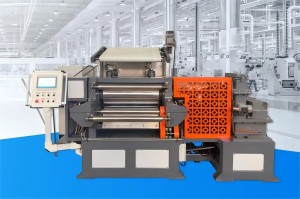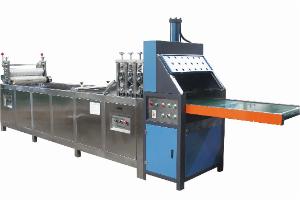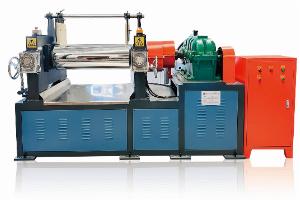
Automatic Rubber Cutting Machine vs Manual Cutting: Which Is Better for Your Factory?
2025-09-09
For decades, many factories relied on manual rubber cutting to handle sheets, rolls, or blocks. While it worked in the past, times have changed. With tighter deadlines and rising labor costs, more U.S. manufacturers are asking: Should we switch to an Automatic Rubber Cutting Machine or stick with manual cutting?
Let’s break it down in detail.
1. The Manual Cutting Approach
Manual cutting is exactly what it sounds like — workers using knives, blades, or cutters to slice rubber to size.
Pros:
-
Low initial cost
-
No need for advanced training
-
Flexibility for small batch jobs
Cons:
-
Inconsistent cutting accuracy
-
High labor intensity
-
Increased risk of injury
-
Material waste due to errors
Simply put, manual cutting is like using a hand saw in the age of laser cutters. It works, but not very well for long-term efficiency.
2. What an Automatic Rubber Cutting Machine Offers
Now let’s look at automation. An Automatic Rubber Cutting Machine brings precision, speed, and consistency to the production line.
Key Advantages:
-
High accuracy: Cuts are uniform every time.
-
Faster throughput: Much higher production speed.
-
Material savings: Less waste, more usable product.
-
Operator safety: Built-in protection systems.
-
Lower labor costs: Fewer workers needed.
And here’s the kicker: many factories find that the machine pays for itself in just months by reducing waste and labor.
3. Side-by-Side Comparison
| Feature | Manual Cutting | Automatic Rubber Cutting Machine |
|---|---|---|
| Accuracy | Low | High |
| Speed | Slow | Fast |
| Safety | Risk of injury | Operator-friendly systems |
| Labor Costs | High | Reduced |
| Waste | More scrap | Minimal waste |
| Scalability | Not suitable | Ideal for mass production |
When you look at the numbers, it’s not even a fair fight.
4. The User Experience Factor
Sometimes, decision makers forget about the people actually running the machines. Manual cutting is exhausting and prone to mistakes when workers get tired.
By contrast, an Automatic Rubber Cutting Machine allows operators to set cutting parameters and let the system run smoothly. Workers are safer, less stressed, and more productive. Honestly, who wouldn’t prefer that?
5. Cost Considerations
Yes, automation requires a higher upfront investment. But the ROI is impressive:
-
Less waste means more profit.
-
Lower labor costs free up your workforce for skilled tasks.
-
Consistent quality reduces customer complaints and returns.
We has seen U.S. manufacturers recover their investment in as little as six months. That’s not just good business — that’s smart business.
6. Why Buy from a China Supplier?
Factories like Quanzhou Sanxing Machinery Industry And Trade Co., Ltd. specialize in Automatic Rubber Cutting Machines for global clients. As a leading China manufacturer, we offer:
-
OEM/ODM customization for different rubber materials
-
Competitive pricing compared to U.S. and EU brands
-
CE-certified safety and quality standards
-
Reliable after-sales service with parts and training support
More and more U.S. buyers realize that sourcing from China isn’t just cost-saving — it’s a step up in quality and customization.
So, which is better for your factory — manual cutting or automatic cutting?
-
If you only do small batches occasionally, manual cutting can still work.
-
But if you’re serious about scaling up, reducing waste, and staying competitive in the U.S. market, the Automatic Rubber Cutting Machine is the clear winner.
The real question is: How long will you keep losing money to waste and labor before you upgrade?


